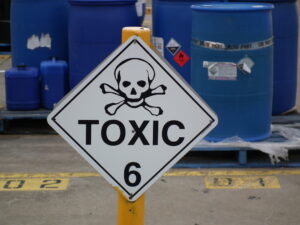The EPA recently announced it finalized amendments to the 2018 Toxic Substances Control Act (TSCA) Fees Rule that update how the Agency will recover authorized costs of the law’s implementation and ensure collected fees provide the Agency with 25% of authorized costs consistent with direction from Congress. The Agency expects these amendments to strengthen its ability to successfully implement the law in a sustainable way, improve the efficiency of the EPA’s chemical reviews, and ensure these reviews result in necessary health and safety protections.
“The 2016 amendments to TSCA greatly increased EPA’s authority and responsibility to protect people and the environment from toxic chemicals,” according to an Agency news release. “While Congress provided EPA with new authority to collect fees to offset up to 25% of authorized TSCA implementation costs, the 2018 TSCA Fees Rule resulted in collection of less than half of the costs EPA had the authority to collect, adding to implementation challenges caused by insufficient resources.”
Additionally, the EPA’s October 2022 report to Congress on its capacity to implement the 2016 law acknowledges compounding failures on the EPA’s part in the first few years following enactment to adequately assess its resource needs early and to establish fees that capture the updated cost of the EPA’s TSCA work.
“Under the Biden-Harris Administration, we’ve made incredible progress implementing our nation’s chemical safety law, and today is another major step forward as we work to build a more sustainable, efficient program that protects public health,” said Assistant Administrator for the Office of Chemical Safety and Pollution Prevention Michal Freedhoff in the EPA release. “This final rule will provide more resources, allowing EPA to review more chemicals more efficiently, which means better and faster protections for communities from dangerous chemicals and robust support for American innovation of new chemistries.”
There are eight different “fee-triggering events under TSCA sections 4, 5 and 6:
- Test Rules under TSCA section 4
- Enforceable Consent Agreements under TSCA section 4
- Test Orders under TSCA section 4
- New Chemical Notices (Pre-manufacture Notices, Significant New Use Notices, and Microbial Commercial Activity Notices) under TSCA section 5
- New Chemical Exemption Applications (Low Volume Exemption, Test Marketing Exemption Application, TSCA Environmental Release Application, etc.) TSCA section 5
- EPA-Initiated Risk Evaluations under TSCA section 6
- Manufacturer-Requested Risk Evaluations for Chemicals on the TSCA Work Plan
- Manufacturer-Requested Risk Evaluations for Chemicals NOT on the TSCA Work Plan”
EPA fees are calculated “by estimating the total annual costs of carrying out relevant activities under TSCA Sections 4, 5, and 6 (excluding the costs of [manufacturer-requested risk evaluations (MRREs)]) and conducting relevant information management activities under TSCA Section 14; identifying the full cost amount to be defrayed by fees under TSCA Section 26(b) (i.e., 25 percent of those annual costs); and allocating that amount across the fee-triggering events in TSCA Sections 4, 5, and 6,” advises a Lexology article by Bergeson & Campbell PC. “EPA notes that in addition, it affords small businesses an approximately 80 percent discount, in accordance with TSCA Section 26(b)(4)(A).”
See the EPA TSCA Fees Table website for the updated fee amounts under the final rule.

